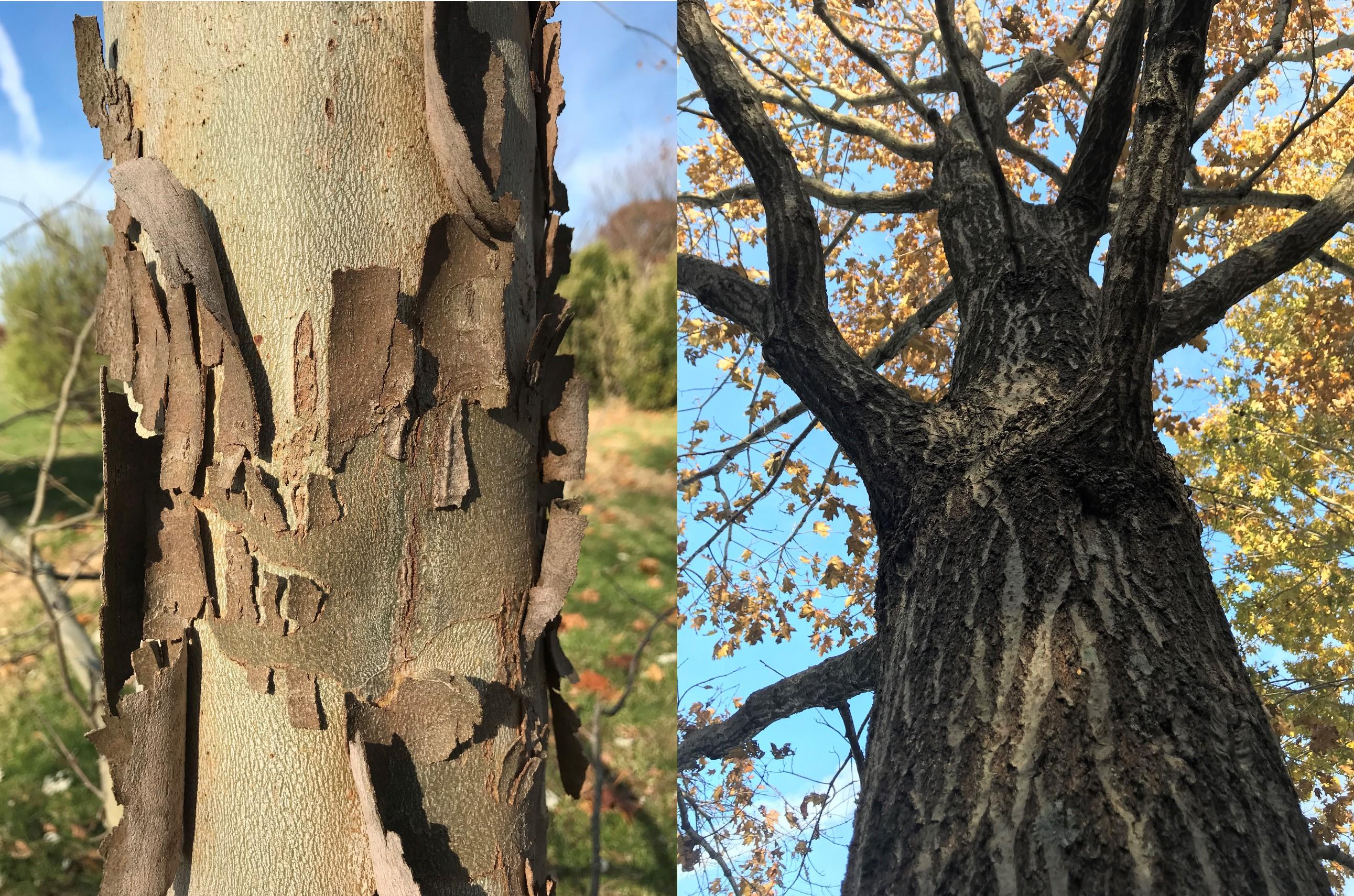Bark!
Bark!

It seems to be consistently cool in Kentucky and, after the cold snap we had in the middle of November, trees have finally decided it’s time to shut down for the winter. Although some deciduous trees hold on to their leaves in the winter, a trait known as marcescence (the retention of dead plant parts), many trees are now simple skeletons. Although we mourn the loss of lush green leaves and the brilliant colors of fall, their absence allows us to see the form of trees more clearly, and their often notable bark.
Bark is the outer-covering of a tree's trunk, branches, and sometimes roots. Bark is protective – it provides the more susceptible inner wood a physical and chemical barrier from outside stressors such as pests, pathogens, and mechanical damage. It helps regulate temperatures within the tree, and the wax and oil-infused cell walls help reduce water loss (dessication). It is actually made up of several layers of tissues, like the cork cambium which is a lateral meristem that produces the cork cells, and phelloderm, which altogether make up bark. It also contains compounds like lignins, which are components of plant cells that provide strength and rigidity, and tannins, which are complex chemical substances that help ward off harmful bacteria and fungi.
Just below the bark is the cambium, which is another lateral meristem, a thin line of dividing cells that produce xylem – cells that transport water and dissolved minerals – to the inside, and phloem – cells that transport carbohydrates (sugars) – to the outside. Growth rings of trees are the result of the seasonal production of xylem by the cambium.
Bark can be described in many ways: smooth, rough, checkered, diamond-patterned, furrowed, fissured, ridged, exfoliating, peeling, shredding, flaking, fibrous, plated, warty, corky, striated, muscled… the list goes on. Some bark is so unique that it is a major characteristic in identifying certain trees. For example, the American sycamore (Platanus occidentalis, pictured) has characteristic peeling bark that exposes the grey and salmon inner-bark, giving the tree a mottled appearance. Northern red oak (Quercus rubra, pictured), along with a few other red oaks, has mature bark that is dark and striped, an especially good characteristic to identify at a glance while within a forest when the branches, buds, and leave are not visible.
We encourage everyone to give trees a closer inspection. Sometimes just taking a step forward, observing, and describing something can help us understand and appreciate it.

